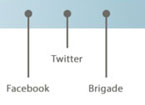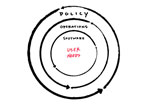
UX Performance Metrics: How to Measure Change
When practitioners can produce data to show how content and design changes affect efficiency and customer sentiment, the work is more accepted and utilized.


When practitioners can produce data to show how content and design changes affect efficiency and customer sentiment, the work is more accepted and utilized.

An evaluation of eight civic engagement platforms that are attempting to use technology to increase civic engagement with local governments.

A case study from Code for America shows how user-centered design can be used to reduce barriers to accessing social services online and offline.

When you design a website for a fundraising event, there are many roles to consider, each with different needs. Untangling the relationships and roles is the critical first step.

Designing mobile apps for emerging markets with more than 60 languages and 215 million people requires a balance of designing, technology, user experience, and simplicity.

Looking at the concept of scarcity can lead to new ways of understanding users, designing for their needs, and making the best use of their resources.

Designing for the aging brain or for those with little computer experience requires strictly defining the website functionality, clear workflows, and minimal page distractions.

Recruiting for research projects can be challenging, but going to places where the people are can make it easier to find the right participants.

How a user centered design process makes openFDA accessible for the public, developers, and agencies (globally). Learn how you can improve consumption of large government datasets.

Designing websites for an Intimate Partner Violence nonprofit organizations comes with many special considerations that need to keep the safety of survivors at the forefront.

User Experience Professionals Association (UXPA) International supports people who research, design, and evaluate the user experience (UX) of products and services.